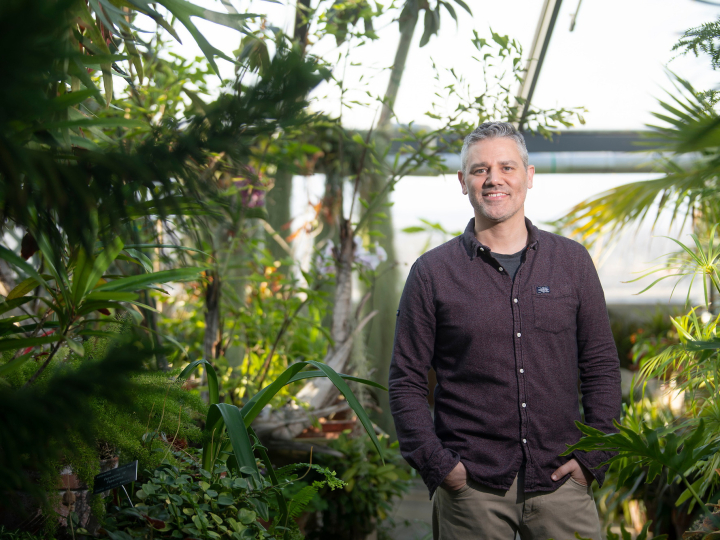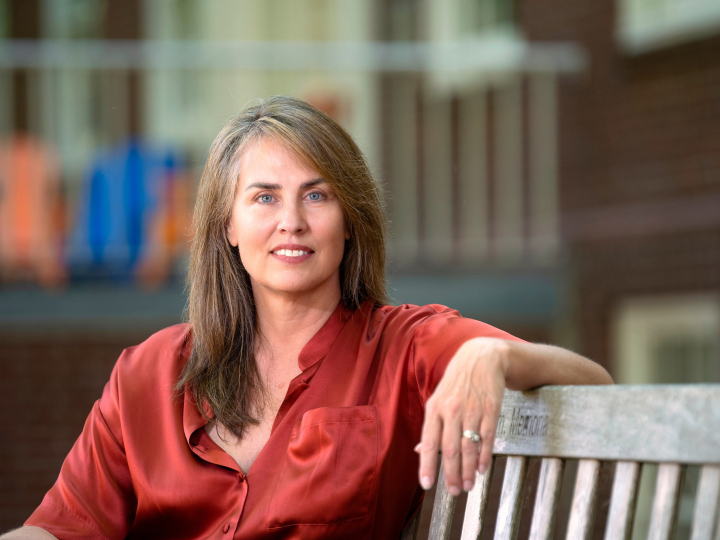Astronomy and Education Team Brings the Universe Down to Earth
November 9, 2016
One of the most difficult challenges astronomy educators face is that space is so vast there is little frame of reference here on Earth to help us understand its scale — so much so that the word astronomical itself could be defined as "bigger than you can imagine."
What does it mean, for example, to say that the nearest star is 400,000 times farther from Earth than Earth is from the sun, or that two stars that appear right next to each other from our vantage point are separated by trillions of miles? Gazing up at the night sky, it all looks the same, a blanket flecked with pinpricks of light.
To help students — not only at Bucknell but at colleges and universities around the world — wrap their heads around the enormity of universe, astronomy professor Ned Ladd and education professor Katharyn Nottis have teamed up with colleagues from Harvard University and Microsoft to produce a series of exercises that introduce the massive scale and other basics of astronomical observation. Supported by a Transforming Undergraduate Education in Science, Technology, Engineering and Mathematics grant of approximately $200,000 from the National Science Foundation (NSF), Ladd, Nottis, their collaborators and Bucknell students have over the past four years developed lab modules for introductory astronomy courses and used feedback from rigorous assessments to make them as effective as possible. This fall, they began making the labs available for anyone to access.
The lab exercises they've created involve virtual "tours" using WorldWide Telescope, a free, open-source, three-dimensional visualization tool for astronomical data developed by Microsoft and managed by the American Astronomical Society.
"The WorldWide Telescope allows us to leave our earthbound perspective and see the universe from a variety of different perspectives — we can actually see the true three‑dimensionality of the universe," Ladd said. "We don't have that luxury in the real world because we only get one view of the universe, a static view from our earthbound perspective."
While it's a powerful tool, Ladd said using WorldWide Telescope alone could give rise to a "video game mentality" — a sense that a student's experience in the virtual space of the program is somehow divorced from the world outside. To counter that risk, the team has developed labs that pair real-world experiments with virtual exploration.
One of the labs they've created, for instance, focuses on the concept of parallax and its use in measuring astronomical distances. Parallax — an essential but notoriously challenging concept to teach to novice astronomers — refers to the way an object's position appears to change as we move our viewpoint, with objects that are closer to us appearing to move farther relative to objects that are more distant. Students in the parallax lab use a tool called a transit (frequently used by surveyors) to measure angles between campus landmarks as they move around a static point on the ground, simulating the motion of the Earth around the sun. They explore the same concept within WorldWide Telescope, using the program to view familiar constellations such as Orion and the Big Dipper both from Earth and from a location six parsecs away.
"People learn with different modalities, and some are stronger than others — we know, for instance, that if people can actively participate in some way they're going to learn better," Nottis said. "We're taking something that is thought of as fairly abstract and trying to find ways to make it more concrete. If you teach with a variety of sensory modalities and a variety of methods, you're bound to hit one that clicks much better than if you do it just one way."
Bucknell students Emily Vislosky '18 and Katelyn Kempf '18, both education majors, helped produce an instructional video for the parallax lab and played an important role in assessing how successful the labs were at educating students and offering suggestions for improvements.
"We started researching why students often have trouble understanding parallax and what teaching strategies can be implemented to change that," Vislosky said. "We looked at old exams and lab tests, looking for the common trends."
"When we learned about the WorldWide Telescope lab, we got to learn what students in the class were learning and understand what parts of it were confusing," Kempf added. "We helped to change some of the wording that was tripping people up."
As they wrap up developing the labs themselves, the students are now working with Nottis and Ladd to publish their findings in an academic journal, and Ladd and Nottis are eager to spread the word in hope that the labs will be employed in classrooms around the world. Ladd has given presentations about the project at a joint conference of the NSF and the American Association for the Advancement of Science in Washington, D.C., and at a European education conference held in Slovenia.
The group designed the labs to be inexpensive to reproduce so that they could be used by institutions that may not have an observatory or high-cost laboratory equipment. WorldWide telescope is a free program, and while the transits used in the parallax lab cost about $300 each, free and inexpensive smartphone apps can perform the same task.
"We wanted to make sure that there was a way that these tools would be available to institutions that aren't as well funded as Harvard and Bucknell," Ladd said. "So you can download WorldWide Telescope, download our products, and boom, you've got a lab ready to go."

